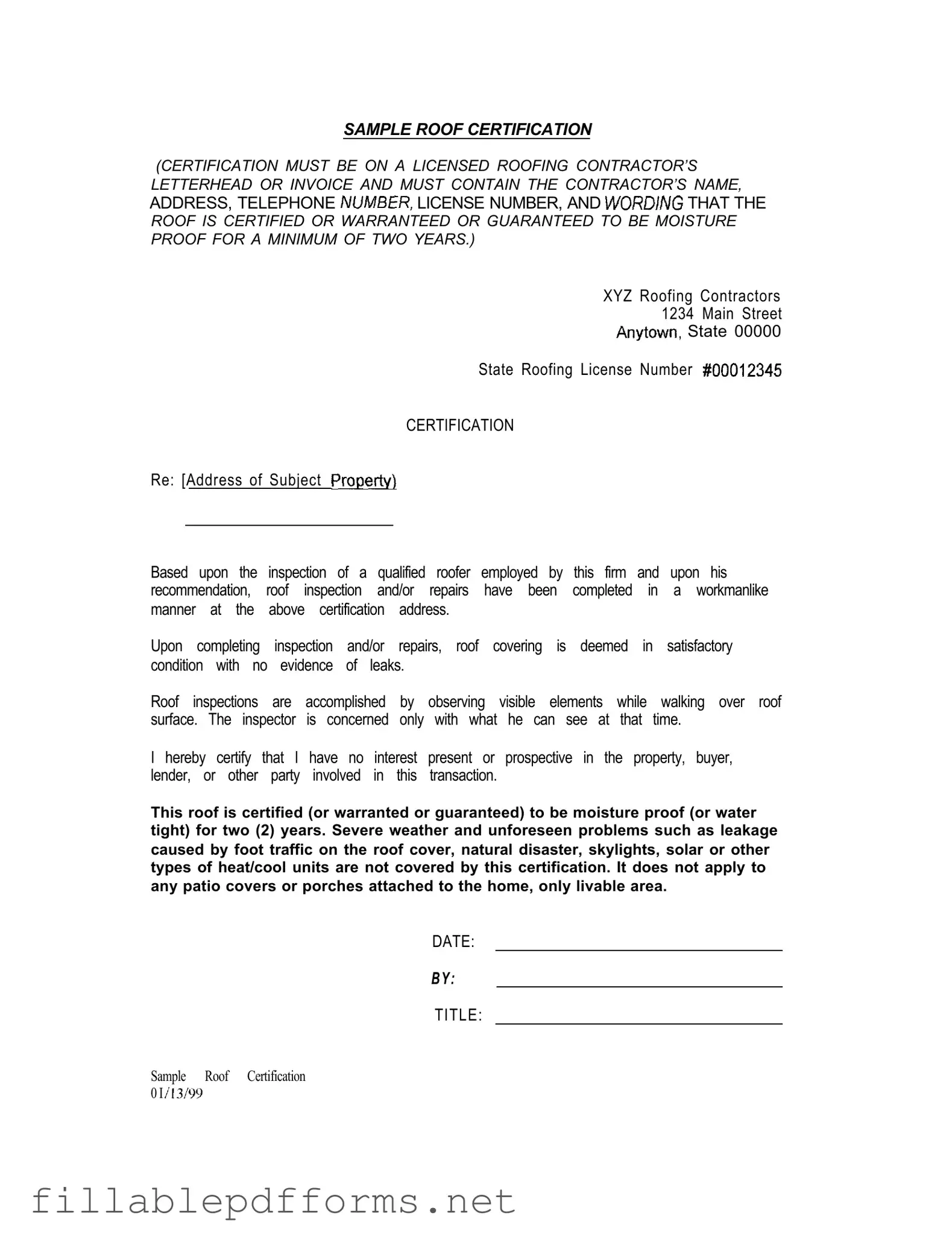The Sample Roof Certification form serves as an essential document for homeowners, contractors, and financial institutions involved in real estate transactions. This certification must be presented on the letterhead or invoice of a licensed roofing contractor, ensuring that it includes critical information such as the contractor's name, address, telephone number, and license number. The form explicitly states that the roof is certified, warranted, or guaranteed to be moisture-proof for a minimum of two years. It references an inspection conducted by a qualified roofer, confirming that any necessary repairs have been completed in a workmanlike manner. The inspector's assessment is based on visible elements observed during a physical inspection of the roof surface, which means that only apparent issues are addressed. Importantly, the certification clarifies that the inspector has no vested interest in the property or the parties involved in the transaction, maintaining objectivity. While the roof is deemed satisfactory and free from leaks, the form also outlines limitations, noting that severe weather and unforeseen issues—such as damage from foot traffic or natural disasters—are not covered. Additionally, the certification applies solely to the livable area of the home, excluding any patio covers or porches. This comprehensive overview of the Sample Roof Certification form highlights its significance in safeguarding the interests of all parties involved in property transactions.
